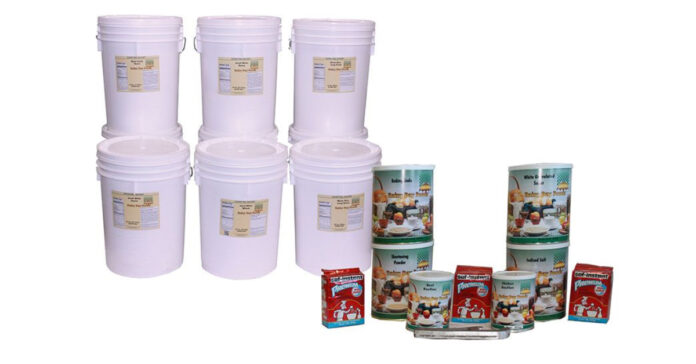I am a fan of Rainy Day Foods, a company out of Idaho that sells long-term storage food. I bought my first #10 cans from their parent company, Walton Feed, in the 1990s when I was prepping for Y2K.
If I had inside information the end of the world as we know it was coming next month, I would order a selection of food from them. My order would include several of their Basic 1 Year Units, which include ten super pails of grain, five of beans, and one of powdered milk. As a result, I monitor the price of this unit, which at one time was about $1,000. In February of last year, it cost $1,193.99. Today, it costs $1,428.89, an increase of $235 or 19.7 percent. Of course, that’s without the cost of shipping, which would be additional.
Many of my super pails of grains and beans are about ten years old, with some dating back further. If I had the storage space, I would have ordered a couple of these units two years ago. Unfortunately, we’re so tight on storage space everything new we store has to replace something old.
If you are starting out in prepping, I’d recommend a unit like this one as a foundation of your long-term food preps after you’ve built up your prepper pantry. You’ll need a grain mill, but this will provide many months of meals and allow you to stretch your prepper pantry.
Of course, you don’t have to buy this exact unit. You can make up one of your own. You can source your own grains and beans and package them yourself, or you can shop around and look for a better deal. But wheat, rice, oatmeal, and beans plus powdered milk in super pails with Mylar bags and oxygen absorbers remain as important to your long-term storage program today as they were 25 years ago.
Inflation
Of course, long-term storage food isn’t the only thing that costs more today than it did a year ago. The post office, which had a price increase in January, just announced another increase will hit in July. The cost of a first class stamp will jump 3 cents, or 5 percent. When I was born, stamps were 5 cents, and I dare say the mail got there faster.
The cost for eggs is 36 percent higher today than this time last year, bread is up 16 percent, pet food is up 14.4 percent, and your electric bill has risen 10 percent. Gasoline around here has risen 30 cents per gallon in the past three weeks, although it is down from last year’s post-Ukraine invasion highs. As this article says, prices are “still rising, just more slowly than a year ago.”
I’ve noticed the price of bacon and canned chicken at Sam’s Club are down from last year, but still higher than two years ago. Electricity is up 25 percent since Biden cracked down on fossil fuels in favor of green energy. His EPA’s latest ruling on tail pipe emissions will not only make the average car cost more, it will drive up electricity costs even further.
Getting solar panels and selling electricity back to the power company is looking like it might be a good long-term decision.
Recession
Have you noticed the mainstream media and the financial media are using the “R” word with increasing frequency? I consider this a foretelling of what we all know to be true: recession is coming. This wave of news stories seeds the idea that a recession is coming to prepare the public so that it minimizes the surprise and panic when the government officially recognizes the recession.
The way things are looking in the banking sector, a recession might be the best we can hope for and would be preferable to a financial collapse.
I’ve written about preparing for a recession before. The most important thing is to have a source of income and little or no debt. Job security matters more than ever during a recession. With an income, you can survive it. Without an income, you might lose everything you’ve worked for.
That’s when you’ll want that one-year supply of food.








